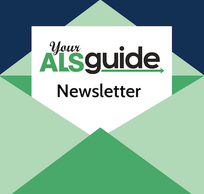|
A cough assist is an airway clearance device that helps your breathing by moving phlegm and fluid-like secretions from your lungs. Most people living with ALS use cough assist machines and feel more comfortable as a result. Regular use can help maintain the strength of your diaphragm and help prevent infections like pneumonia and bronchitis.
|
|
How does a cough assist work?
|
When your respiratory muscles are weakened, it can become difficult to cough strongly enough to draw phlegm from your lungs up to your mouth. The cough assist machine simulates a natural cough by applying positive pressure to inflate your lungs before using a vacuum-like suction to pull everything up.
Once secretions are in your mouth, you can use a suction machine to clear everything out. |
|
How often should I use it?
|
You should use your cough assist regularly, even when you don’t feel you have anything in your lungs to clear. Regular use, such as once in the morning and once in the evening, serves as therapy to strengthen your diaphragm, keep your lungs clear, and reduce the chance of infection, which can be more difficult to recover from for people living with ALS. Each session produces multiple coughs and typically lasts between five and ten minutes.
|
|
When should I get one?
|
If you are experiencing a weak or impaired cough, your neurologist will order you a cough assist machine, often during a clinic or doctor visit. A durable medical equipment (DME) company will process the order through insurance and deliver the cough assist to you at home or at your ALS clinic. A respiratory therapist will train you and your caregivers how to use it and adjust your settings if needed.
|
|
How much will I have to pay?
|
Cough assist machines are considered rentals for the first 13 months and are covered through Medicare, Medicaid, and most private insurance plans. After 13 months, the machine becomes yours and your supplies will continue to be covered by your insurance. You may need to be proactive and ask your insurance for replacement masks, tubing, and filters ahead of time.
Medicare will cover 80% of the cost of your monthly rental. Medicaid, supplemental plans, and secondary private insurance should pay for the remaining 20%. If you have Medicare but do not have Medicaid, a supplemental plan, or secondary private insurance, you will likely have to pay the remaining 20% out of your own pocket. If you do not qualify for Medicare—but have Medicaid and/or private insurance—find out what your durable medical equipment (DME) benefits will cover. If you have a Medicare Advantage Plan, be sure to ask about your DME benefits. If you are facing out-of-pocket expenses that you cannot afford, talk with your DME provider and/or local ALS organization about financial assistance options. Respiratory equipment is not generally available from loan closets, but you can always ask. |
|



